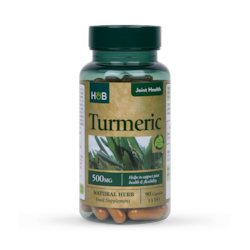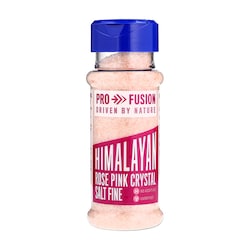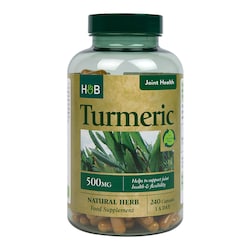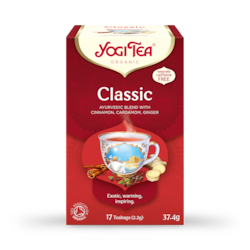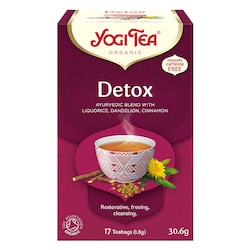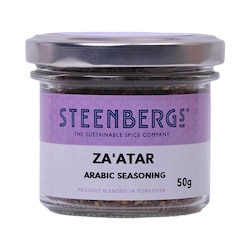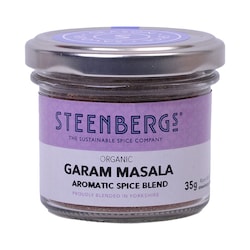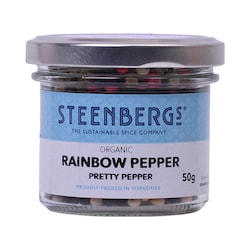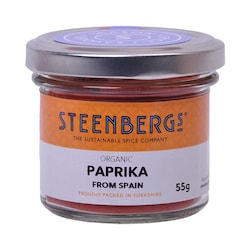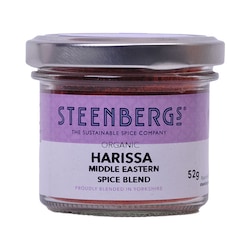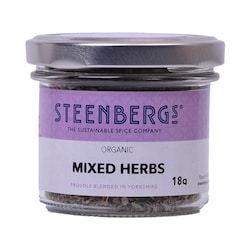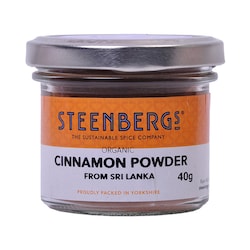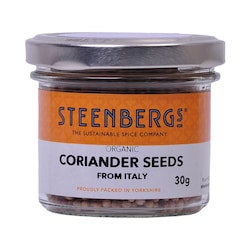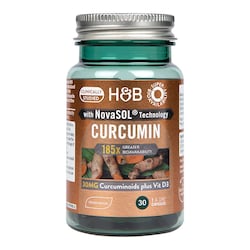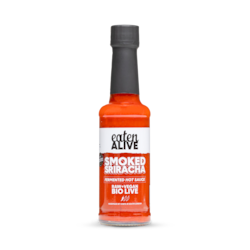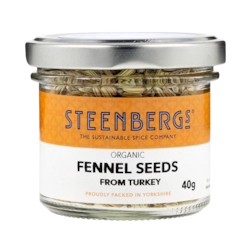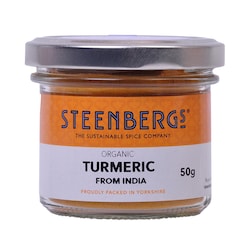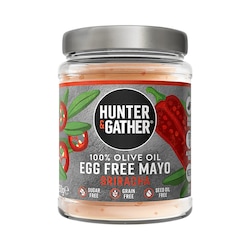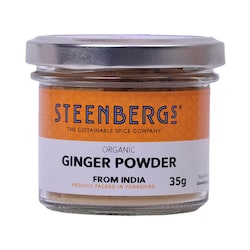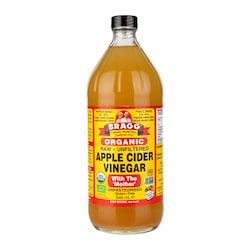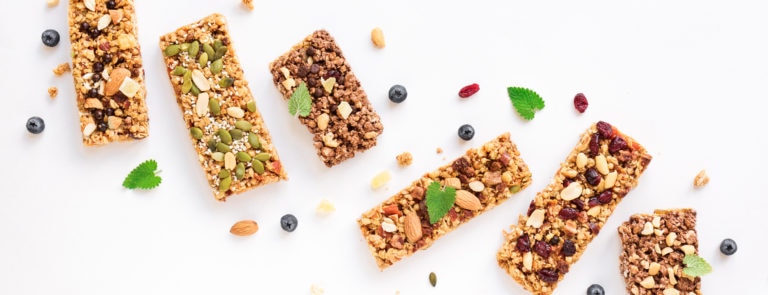15% off £30 OR 20% off £40
25 ways to use cinnamon sticks for cooking & baking
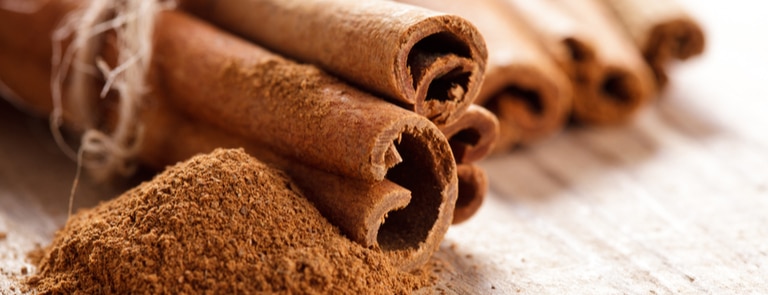
Cinnamon is a spice that comes from the inner bark of several species of evergreen trees (Cinnamomum), which belong to the laurel family.1
This spice is grown all over Asia, Europe, and North America, with the most popular varieties hailing from Sri Lanka and China. As for its historical roots, cinnamon was used by the ancient Egyptians together with myrrh to embalm the dead, and the Romans burned it on funeral pyres. It was used in religious ceremonies by the ancient Hebrews and is referenced in the Bible as a holy anointing oil ingredient.
There are two main types of cinnamon - Cassia cinnamon, which is produced in China, Vietnam and Indonesia, and is most commonly sold in the United States and Canada. And there’s Ceylon cinnamon, which is produced in Sri Lanka, India, Madagascar, Brazil and the Caribbean. It’s known as ‘true’ cinnamon and has more of a subtle flavour.2
Summary
Cinnamon is a spice made from evergreen tree bark. There are two main types of cinnamon – Cassia and Ceylon. Cassia hails from China, Vietnam and Indonesia and is the most widely-used form of cinnamon in the US and Canada. While Ceylon is produced in Sri Lanka, India, Madagascar, Brazil and the Caribbean and is considered to be a ‘true’ form of cinnamon.
What are the benefits of cinnamon?
There are several benefits to incorporating ground cinnamon or cinnamon sticks, which are also called quills, into your cooking and baking. We’ve listed some of the main benefits below:
-
It’s anti-viral, anti-bacterial and anti-fungal
Cinnamon has an extremely distinctive flavour and smell, which comes from the essential oils that are found in the bark that it comes from. These oils are called cinnamaldehyde, which reportedly has anti-viral and anti-bacterial, as well as anti-fungal properties.3
-
It’s anti-inflammatory
This is due to the fact that cinnamon also happens to contain lots of polyphenol antioxidants, which are believed to have anti-inflammatory effects.4
- It can lower blood sugar levels
By slowing down the breaking down of carbohydrates in the digestive tract, which limits the amount of glucose that enters the bloodstream. Taking a dose of 1 to 6g of cinnamon a day has been shown to lower fasting blood sugar levels by 10 to 29%.5
-
It may keep your brain healthy and your memory sharp
Studies that have been carried out on rats into the effects of cinnamon on the brain found that they had lower levels of Tau and amyloid precursor protein in their brain, which are both linked to Alzheimer’s disease.6
-
It may boost gut health
Thanks to its prebiotic properties, it’s thought that cinnamon can help promote the growth of beneficial bacteria and suppress the growth of pathogenic bacteria. Adding it to your diet may potentially help improve gut health.7 Speaking of boosting health, it also happens to contain manganese, dietary fibre, calcium, iron, and zinc.8
-
It can ease digestive issues
Cinnamon extract has long been used to alleviate gastrointestinal problems in Eastern and Western medicine. In traditional Ayurvedic medicine, cinnamon bark oil is used for treating flatulence and digestive imbalance. The warmth of cinnamon reportedly increases blood flow and improves blood oxygen levels.9
-
It may reduce cholesterol
Some studies have found that cinnamon may help lower bad cholesterol levels and raise good cholesterol levels. It’s believed that one compound in particular, cinnamate, which is found in cinnamon, may be able to slow down the enzyme that makes cholesterol. In turn, this may reduce the amount of fatty acids in the blood.10
Summary
There are all sorts of health benefits associated with cinnamon, mainly due to its anti-inflammatory, anti-viral, anti-bacterial and anti-fungal properties. Benefits include calming inflammation, balanced blood sugar levels, boosting brain health and memory and easing digestive issues.
Can you eat cinnamon sticks?
There are several different ways to eat cinnamon sticks. You can grind them into a powder that you can then sprinkle on the top of cakes, desserts, biscuits and other dishes, or you can stir it into food as you’re cooking.11
You can also use cinnamon sticks whole to infuse dishes and drinks and then remove them once your food or drink has the right level of cinnamon taste, depending on your personal preference.
How do you use cinnamon sticks instead of ground cinnamon?
Cinnamon sticks are formed when the pieces of bark from the evergreen trees from which it comes from are removed and left to dry out. These pieces are then cut into smaller sections and sold as cinnamon sticks. What’s left behind, is usually turned into ground cinnamon.12
Generally speaking, ground cinnamon can be substituted with a cinnamon stick. If you’re planning on doing this, 1 to 3 inches of cinnamon stick is the equivalent to 1/2 teaspoon of ground cinnamon. You can grate cinnamon sticks, you can grind them down and you can use them whole.
Note – while cinnamon sticks do last a while, they do lose their potency and flavour intensity over time, so it’s best to use them sooner rather than later.13
How do you bake with cinnamon sticks?
You can use cinnamon sticks in all sorts of ways when it comes to baking, cooking and making drinks. As for baking, you can take the sticks and crumble or grind them into a powder that can then be added to your cake, biscuit or other dessert recipes. Or you can almost use the powder as a garnish and sprinkle it over your bakes for an extra bit of flavour and final extra touch.14
Another idea you may want to try is taking a couple of cinnamon sticks and adding them whole to servings of ice cream or similar. And if you’re baking anything with a sugar coating, e.g. doughnuts, why not add some crumbled up cinnamon sticks to your sugary topping too?
How long does a cinnamon stick last?
If stored properly, cinnamon sticks will generally stay at best quality for around 3 to 4 years.15
To maximize the shelf life of your cinnamon sticks, make sure you store them in a cool, dark cupboard, away from direct heat or sunlight. Better still, keep them in containers with tight-fitting lids.
Tip - to test if your cinnamon sticks still have plenty of flavour, rub or crush a small amount in your hand, then taste and smell them. If the aroma is weak, it’s a sign that the flavour will most probably be the same.
Summary
Cinnamon sticks are incredibly versatile. They can be used whole to infuse dishes and drinks or they can be ground or crumbled up into a powder for all sorts of sweet and savoury treats and meals. They can last for up to 4 years, providing you keep them properly – in a cool dark place, preferably in an airtight container. However, they may lose their potency the longer you leave them.
How much cinnamon is safe to consume every day?
Ideally, cinnamon should be enjoyed in moderation. When it comes to the Cassia variety, you should take no more than 5mg of it a day.16
This is due to the fact it contains large amounts of the compound, coumarin, which can be dangerous for your liver. In animal studies, too much coumarin has been shown to increase the risk of cancerous tumours.
Ceylon, or ‘true’ cinnamon, contains only trace amounts of coumarin, making it a safer option than Cassia.
What are the side effects of cinnamon?
Allergic reactions
Some people may find they are allergic to cinnamon; more specifically a compound it contains called cinnamaldehyde. People with cinnamaldehyde allergies sometimes experience mouth sores, tongue or gum swelling, and burning and itching in the mouth.17
Aspiration pneumonia
Cinnamon should always be mixed into food or drink and never eaten dry. Eating it this way can lead to choking because the lungs aren't able to break down the fibres it contains. Over time, it can build up in the lungs and potentially lead to aspiration pneumonia.18
Blood sugar levels
One of the benefits of cinnamon is that it can help to regulate blood sugar levels (as mentioned above). However, it can potentially reduce blood sugar levels too much in some people, which can cause dizziness, fatigue, shakiness and anxiety.19
Note – cinnamon may even increase the effects of diabetes medication, which may result in blood sugar levels dropping too low. If you are taking diabetes medication, speak to your GP first before adding cinnamon to your diet or taking cinnamon supplements.
Summary
It’s possible for some people to have an allergic reaction to cinnamon, more specifically the compound, cinnamaldehyde, that can be found in cinnamon. Eating dry cinnamon, which isn’t recommended, can lead to aspiration pneumonia due to it building up in the lungs. And while cinnamon’s ability to lower sugar levels is a positive, it may reduce these levels too much in people who are taking diabetes medication.
25 ways to use cinnamon in your cooking and baking
Cinnamon sticks can be used to flavour dishes, drinks or sauces and are then thrown away. Meanwhile, ground cinnamon can be mixed into meals or sprinkled on top of baking, desserts, savoury dishes, as well as drinks too. There are all sorts of ways you can give your cooking or baking a cinnamon boost!
Here are some ideas for how to use cinnamon in your cooking and baking:
- Make your own honey granola and spice it up with some cinnamon.20
- If you’re trying to cut down your sugar intake, use it as an alternative to honey and sweeteners. A sprinkling of cinnamon in a mug of coffee contains less than 1 calorie, while a teaspoon of honey has around 20 calories.21
- Bake a loaf of sweet potato cinnamon bread.22
- Make a mug of honey cinnamon milk.23
- Whip up a batch of cinnamon nut bars.24
- Make a giant cinnamon roll.25
- Simmer a cinnamon stick in your porridge.26
- Cook up a cinnamon swirl apple pie.27
- Make some cinnamon frosting for your freshly-baked cake.28
- Whip up a cinnamon latte.29
- Bake a batch of cinnamon cookies.30
- Make a creamy sweetcorn cinnamon soup.31
- Stir it into Indian Butter Chicken to add extra depth and flavour.32
- Bake yourself some cinnamon raisin bagels.33
- Break up a cinnamon stick to infuse in a pot of tea or coffee.34
- Make a comforting cup of hot vanilla.35
- Add it to your Moroccan Meatballs.36
- Stir some into gingerbread hot cocoa.37
- Flavour your bone broth with a cinnamon stick.38
- Make seared salmon with cinnamon and chilli powder.39
- Create a fish tagine with tomatoes, capers and cinnamon.40
- Bake a loaf of cinnamon bread.41
- Make some cinnamon sugar to sprinkle into your baking and drinks.42
- Add some cinnamon sticks to the meat in your slow cooker.43
- Sprinkle cinnamon on your toast.44
As distinctive as it may smell and taste, cinnamon works well in so many savoury and sweet recipes, as well drinks. In fact, the more you think about what you can do with cinnamon sticks, the more ideas you’ll come up with and find; there are no end of options!
Whether you’re trying cinnamon for the first time, are planning on using it some more or can’t get enough of the stuff and want to know about some different ways of using it, we hope this article helps.
Keen to get started on adding some more cinnamon to your life right away? Have a go at this recipe, which you’ll need a cinnamon stick, along with some other ingredients to make - ‘Gluten free pumpkin spice pancakes’
Last updated: 22 April 2021
- https://www.everydayhealth.com/diet-nutrition/diet/cinnamon-nutrition-benefits-types-recipes/
- https://www.mindbodygreen.com/articles/cinnamon-uses-health-benefits-and-side-effects
- https://www.bbcgoodfood.com/howto/guide/health-benefits-cinnamon
- https://www.bbcgoodfood.com/howto/guide/health-benefits-cinnamon
- https://www.mindbodygreen.com/articles/cinnamon-uses-health-benefits-and-side-effects
- https://www.mindbodygreen.com/articles/cinnamon-uses-health-benefits-and-side-effects
- https://www.bbcgoodfood.com/howto/guide/health-benefits-cinnamon
- https://honestcooking.com/10-cinnamon-facts-you-should-know/
- https://www.bbcgoodfood.com/howto/guide/health-benefits-cinnamon
- https://www.besthealthmag.ca/best-you/health/health-benefits-of-cinnamon/
- https://www.leaf.tv/5766942/the-benefits-of-cinnamon-sticks/
- https://www.gourmetsleuth.com/ingredients/detail/cinnamon-stick/
- https://www.stilltasty.com/fooditems/index/16886
- https://www.leaf.tv/articles/what-to-do-with-cinnamon-sticks/
- https://www.stilltasty.com/fooditems/index/16886
- https://www.mindbodygreen.com/articles/cinnamon-uses-health-benefits-and-side-effects
- https://www.mindbodygreen.com/articles/cinnamon-uses-health-benefits-and-side-effects
- https://www.mindbodygreen.com/articles/cinnamon-uses-health-benefits-and-side-effects
- https://flo.health/menstrual-cycle/lifestyle/diet-and-nutrition/cinnamon-side-effects
- https://www.everydayhealth.com/diet-nutrition/diet/cinnamon-nutrition-benefits-types-recipes/
- https://www.everydayhealth.com/diet-nutrition/diet/cinnamon-nutrition-benefits-types-recipes/
- https://www.tasteofhome.com/collection/cinnamon-recipes/
- https://www.tasteofhome.com/recipes/honey-cinnamon-milk/
- https://www.tasteofhome.com/collection/cinnamon-recipes/
- https://www.tasteofhome.com/collection/cinnamon-recipes/
- https://www.kcet.org/food-discovery/food/6-uses-for-cinnamon-sticks-that-dont-involve-dessert
- https://www.tasteofhome.com/collection/cinnamon-recipes/
- https://www.tasteofhome.com/collection/cinnamon-recipes/
- https://www.wellandgood.com/cinnamon-drinks/
- https://www.food.com/recipe/cinnamon-cookies-48241
- https://www.tasteofhome.com/collection/cinnamon-recipes/
- https://www.cosmopolitan.com/food-cocktails/a29536/cinnamon-recipes/
- https://www.cosmopolitan.com/food-cocktails/a29536/cinnamon-recipes/
- https://www.kcet.org/food-discovery/food/6-uses-for-cinnamon-sticks-that-dont-involve-dessert
- https://www.cosmopolitan.com/food-cocktails/a29536/cinnamon-recipes/
- https://www.cosmopolitan.com/food-cocktails/a29536/cinnamon-recipes/
- https://www.yummly.co.uk/recipe/Gingerbread-Hot-Cocoa-and-Marshmallow-Men-2098855
- https://www.kcet.org/food-discovery/food/6-uses-for-cinnamon-sticks-that-dont-involve-dessert
- https://food52.com/recipes/2641-seared-salmon-with-cinnamon-and-chile-powder
- https://www.food.com/recipe/fish-tagine-with-tomatoes-capers-and-cinnamon-428302
- https://www.allrecipes.com/recipe/6934/cinnamon-bread-i/#
- https://www.thespruceeats.com/how-to-make-cinnamon-sugar-3060767
- https://www.thekitchn.com/5-great-reasons-you-should-keep-cinnamon-sticks-in-your-kitchen-tips-from-the-kitchn-210555
- https://foodal.com/knowledge/herbs-spices/sweet-savory-cinnamon/


